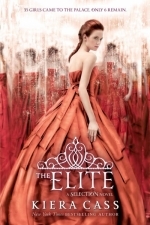Search
Search results
Leanne Crabtree (480 KP) rated White Hot Kiss in Books
Jan 6, 2021
I received this ARC via Netgalley in exchange for an honest review.
This will be my third book by the author, fourth if we class her writing as J. Lynn, and I've liked all of them so the chance to read anything by her is a big YES PLEASE!
After reading both this and Covenant, I've noticed that she likes to write love triangles into her stories. I don't have a problem with them and gladly cheer on for whichever guy I want the heroine to be with. In this I was Team Roth from early on. Zayne might have been the guy Layla'd been dreaming of for years but he never really seemed to want her in that way (or he was just very good at hiding it) and treated her a lot like a close friend or little sister. Roth on the other hand always seemed to be there when she needed him and he teased and flirted and could kick arse, being what he was: Upper Level Demon.
I feel I have to mention Bambi, too. She was cool! Who wouldn't her watching over you?
I also feel like I have to mention Petr. I'm glad about what happened to him, he wasn't a nice guy so he deserved everything he got.
As for the story, I get Layla's feelings of not really belonging to either side. Being born half demon and half warden, Layla struggles in her attempts to fit in with the people--Warden's--who've raised her. Half the Warden's don't like her presence and want her gone while the other half treat her like family. As for being half demon, she's been tagging them for the past God knows how many years and feels more of a Warden and keeps being told she's a Warden. But as the story progresses, she begins to question everything she's ever known and the people around her.
The more I read of the book, the more I fell in love with Roth. He was amazing and just for that last 10% or so this is getting five stars from me. I cried; tears silently falling down my cheeks more or less continuously for the time it took me to finish the story. Crikey!
I need to read the next in the series to figure out what happens next with these guys.
If you're a fan of the author then this shouldn't be missed. If you haven't read anything by Jennifer L. Armentrout and like YA paranormal romances then you should really pick up one of her books, they're really good.
This will be my third book by the author, fourth if we class her writing as J. Lynn, and I've liked all of them so the chance to read anything by her is a big YES PLEASE!
After reading both this and Covenant, I've noticed that she likes to write love triangles into her stories. I don't have a problem with them and gladly cheer on for whichever guy I want the heroine to be with. In this I was Team Roth from early on. Zayne might have been the guy Layla'd been dreaming of for years but he never really seemed to want her in that way (or he was just very good at hiding it) and treated her a lot like a close friend or little sister. Roth on the other hand always seemed to be there when she needed him and he teased and flirted and could kick arse, being what he was: Upper Level Demon.
I feel I have to mention Bambi, too. She was cool! Who wouldn't her watching over you?
I also feel like I have to mention Petr. I'm glad about what happened to him, he wasn't a nice guy so he deserved everything he got.
As for the story, I get Layla's feelings of not really belonging to either side. Being born half demon and half warden, Layla struggles in her attempts to fit in with the people--Warden's--who've raised her. Half the Warden's don't like her presence and want her gone while the other half treat her like family. As for being half demon, she's been tagging them for the past God knows how many years and feels more of a Warden and keeps being told she's a Warden. But as the story progresses, she begins to question everything she's ever known and the people around her.
The more I read of the book, the more I fell in love with Roth. He was amazing and just for that last 10% or so this is getting five stars from me. I cried; tears silently falling down my cheeks more or less continuously for the time it took me to finish the story. Crikey!
I need to read the next in the series to figure out what happens next with these guys.
If you're a fan of the author then this shouldn't be missed. If you haven't read anything by Jennifer L. Armentrout and like YA paranormal romances then you should really pick up one of her books, they're really good.

WhatsApp Messenger
Communication, Social Networking and Utilities
App
WhatsApp Messenger is a FREE messaging app available for iPhone and other smartphones. WhatsApp uses...
This ebook was provided by the publisher via NetGalley in exchange for an honest review
Bullying is a topic many authors try to tackle, usually ending up with the bullied overcoming their tormentors. But, as many people have experienced, that is not always the result in real life. Natasha A. Salnikova, on the other hand, produces an alternative solution, a solution that is almost too horrific to imagine.
Fifteen-year-old Corby Mackentile is the stereotypical victim for private school bullies; she is quiet, intelligent and overweight. Whilst mostly humiliating Corby because of her size, the bullies also use her own parents against her. Corby’s mother is a Boston TV Anchor and her father is a vegetarian Buddhist who also happens to own a butcher’s shop.
The butcher’s shop is a haven for Corby; she can escape there after school and not be intimidated by anyone. But when one of the horrible girls from school turns up at the shop after hours, a terrible accident occurs, which gives Corby a new solution to her bullying problem.
It is initially hard to get into the novel Mean Girl; the third person narrative distances the reader from the main character. Although many people may be able to relate to Corby’s situation, the incident in the shop changes her beyond recognition. In order to hide events from her parents, she becomes mean, rude and altogether an unpleasant person.
Until the feeble plot twist at the end of the novel, it is impossible to care much about what happens to Corby. Bullying is a terrible thing to experience but the way Corby deals with it is beyond tolerable.
Mean Girl is advertised as a psychological thriller; however, it appears to be lacking the thrilling aspect. Some may place the book in the horror genre but “horrifying” would be more appropriate. With some scenes containing gruesome details, it is overall not a very pleasant story to read.
Bullying is a topic many authors try to tackle, usually ending up with the bullied overcoming their tormentors. But, as many people have experienced, that is not always the result in real life. Natasha A. Salnikova, on the other hand, produces an alternative solution, a solution that is almost too horrific to imagine.
Fifteen-year-old Corby Mackentile is the stereotypical victim for private school bullies; she is quiet, intelligent and overweight. Whilst mostly humiliating Corby because of her size, the bullies also use her own parents against her. Corby’s mother is a Boston TV Anchor and her father is a vegetarian Buddhist who also happens to own a butcher’s shop.
The butcher’s shop is a haven for Corby; she can escape there after school and not be intimidated by anyone. But when one of the horrible girls from school turns up at the shop after hours, a terrible accident occurs, which gives Corby a new solution to her bullying problem.
It is initially hard to get into the novel Mean Girl; the third person narrative distances the reader from the main character. Although many people may be able to relate to Corby’s situation, the incident in the shop changes her beyond recognition. In order to hide events from her parents, she becomes mean, rude and altogether an unpleasant person.
Until the feeble plot twist at the end of the novel, it is impossible to care much about what happens to Corby. Bullying is a terrible thing to experience but the way Corby deals with it is beyond tolerable.
Mean Girl is advertised as a psychological thriller; however, it appears to be lacking the thrilling aspect. Some may place the book in the horror genre but “horrifying” would be more appropriate. With some scenes containing gruesome details, it is overall not a very pleasant story to read.
Kristin (149 KP) rated Wingless and Damned in Books
Dec 7, 2018
Disclaimer: I received an e-copy from the author in exchange for an honest review.
At the start, we meet Ciarra, the tribal healer, doing her best in a bad situation by performing a spell on tribesmen that will turn them into werewolves. Unfortunately, there's no way to turn them back, as her spirit guides tell her. But at that moment, a mysterious man, Aison, comes out of the forest and grabs Ciarra, taking her to a cave deep in the woods, where his brethren, the Strigoi, those beings the werewolves were created to kill, are waiting. Aison and the others force Ciarra to alter the spell, forever cursing all future members of her tribe to become weres at 26 years old, as they have kidnapped the pregnant leader's wife, Kimi, as leverage. Ciarra is attacked by the other Strigoi, and Aison turns her, but not before Kimi gives birth and dies. Ciarra saves the baby and gives her to two Fae, enslaved by the Strigoi, to protect in their world until the time is right for her to meet her tribal mate and help bring down the original Strigoi. Years later, we meet Lea, the "wingless Fae" from the prophecy, and her story continues from there.
I really enjoyed this book, as there were lots of supernatural elements that I found really interesting. There are Strigoi, werewolves, Fae, tribal curses, spirit guides, etc., and it was really fun to read. However, I feel it would've been better had it been longer, as there were several instances I thought were rushed, such as the battle in the woods between the werewolves and Strigoi. I think it would've made a great novel, including a little more depth to the battle, the tribe's way of life and coping with the curse, etc. However, I still liked it a lot, and I look forward to more.
4 stars
At the start, we meet Ciarra, the tribal healer, doing her best in a bad situation by performing a spell on tribesmen that will turn them into werewolves. Unfortunately, there's no way to turn them back, as her spirit guides tell her. But at that moment, a mysterious man, Aison, comes out of the forest and grabs Ciarra, taking her to a cave deep in the woods, where his brethren, the Strigoi, those beings the werewolves were created to kill, are waiting. Aison and the others force Ciarra to alter the spell, forever cursing all future members of her tribe to become weres at 26 years old, as they have kidnapped the pregnant leader's wife, Kimi, as leverage. Ciarra is attacked by the other Strigoi, and Aison turns her, but not before Kimi gives birth and dies. Ciarra saves the baby and gives her to two Fae, enslaved by the Strigoi, to protect in their world until the time is right for her to meet her tribal mate and help bring down the original Strigoi. Years later, we meet Lea, the "wingless Fae" from the prophecy, and her story continues from there.
I really enjoyed this book, as there were lots of supernatural elements that I found really interesting. There are Strigoi, werewolves, Fae, tribal curses, spirit guides, etc., and it was really fun to read. However, I feel it would've been better had it been longer, as there were several instances I thought were rushed, such as the battle in the woods between the werewolves and Strigoi. I think it would've made a great novel, including a little more depth to the battle, the tribe's way of life and coping with the curse, etc. However, I still liked it a lot, and I look forward to more.
4 stars
BookwormMama14 (18 KP) rated The Lost Heiress (Ladies of the Manor, #1) in Books
Jan 2, 2019
A lost heiress has been found, but the past brings a danger that will threaten all she holds dear.
With a mysterious past, Brooke Eden recruits her closest friend, Justin Wildon, to find who her true family is. She has been raised in Monaco by the Grimaldi family, but she knows that they are not her true family. She is shocked to discover that she is a long lost daughter of The Earl of Whitby and even more surprised that her father receives her with open arms. Although, the rest of the family takes a little more convincing. Horrors of her mother's death haunt Brook and there are many secrets that have to be uncovered. When greed and lust for wealth and power threaten Brook's life, her faith keeps her strong. Will the secrets of the past be revealed? And will Brook return home after being lost for a second time?
"But God does not just instruct us to forgive - He instructs us to trust. To trust that, even though life hurts us, He will take care of us."
Roseanna White had me completely captivated from the first page of The Lost Heiress. Set in 1910, during the Edwardian Period it was a new experience for me. With society rapidly changing and new inventions around every corner, it was wonderful to see it through Brook Eden's eyes. I admire her courage and strength throughout this story. She is someone that I would love to know and to follow on one of her harebrained ideas. She can be rash and impulsive, but her faith is evident. We could all benefit by following her example of putting our trust in the Lord, even when the world seems to be crumbling down around us. If you are a fan of Downton Abbey and love a little mystery with your historical fiction, you will quickly loose yourself between the pages of this book.
I received a free digital copy of The Lost Heiress from Bethany House Publishers through NetGalley in exchange for my honest review.
With a mysterious past, Brooke Eden recruits her closest friend, Justin Wildon, to find who her true family is. She has been raised in Monaco by the Grimaldi family, but she knows that they are not her true family. She is shocked to discover that she is a long lost daughter of The Earl of Whitby and even more surprised that her father receives her with open arms. Although, the rest of the family takes a little more convincing. Horrors of her mother's death haunt Brook and there are many secrets that have to be uncovered. When greed and lust for wealth and power threaten Brook's life, her faith keeps her strong. Will the secrets of the past be revealed? And will Brook return home after being lost for a second time?
"But God does not just instruct us to forgive - He instructs us to trust. To trust that, even though life hurts us, He will take care of us."
Roseanna White had me completely captivated from the first page of The Lost Heiress. Set in 1910, during the Edwardian Period it was a new experience for me. With society rapidly changing and new inventions around every corner, it was wonderful to see it through Brook Eden's eyes. I admire her courage and strength throughout this story. She is someone that I would love to know and to follow on one of her harebrained ideas. She can be rash and impulsive, but her faith is evident. We could all benefit by following her example of putting our trust in the Lord, even when the world seems to be crumbling down around us. If you are a fan of Downton Abbey and love a little mystery with your historical fiction, you will quickly loose yourself between the pages of this book.
I received a free digital copy of The Lost Heiress from Bethany House Publishers through NetGalley in exchange for my honest review.
BookwormMama14 (18 KP) rated A Lady Unrivaled (Ladies of the Manor, #3) in Books
Jan 2, 2019
I LOVE this series. By the end of this book I had tears streaming down my face because of the beauty of the conclusion. (Second series that I have completed this week...GAH!) I admit that these last two books have been especially hard to read, emotionally. There is so much that happens, that definitely pulled on my heart. However, Roseanna pulled it all together wonderfully. Allowing for healing, forgiveness, trust and freedom. How does one go through life without trust in God? I am so very thankful to have been raised in a Christian home. Trusting in the Lord though, can be easier said than done. I never fully understood the peace and the rest that comes when you can fully trust God to guide you and lead your steps. Unfortunately, sometimes it takes dire circumstances for us to be able to get to that place.
Lady Ella is someone that I would love to have as a friend. She has joy that cannot be dissuaded and hope that cannot be deterred. It was so much fun to see characters from the other books make their appearance again. I especially love the interaction between the three heroes from the books. I was laughing out loud at their antics. But as much as I adore Stafford and Nottingham, Cayton is my favorite. Let's just say artistic AND loves Shakespeare...yup...My favorite! A beautiful story set in 1913, England, and filled with mystery, adventure, romance, betrayals, forgiveness, and more romance...You do not want to pass up the conclusion to the Ladies of the Manor and the curse of the Fire Eyes. To truly enjoy the story, I recommend starting with The Lost Heiress, Brooke's tale is one full of adventure and sets the stage for this series brilliantly.
I received a free copy of A Lady Unrivaled from Bethany House Publishers in exchange for my honest review. All opinions expressed are mine alone.
Lady Ella is someone that I would love to have as a friend. She has joy that cannot be dissuaded and hope that cannot be deterred. It was so much fun to see characters from the other books make their appearance again. I especially love the interaction between the three heroes from the books. I was laughing out loud at their antics. But as much as I adore Stafford and Nottingham, Cayton is my favorite. Let's just say artistic AND loves Shakespeare...yup...My favorite! A beautiful story set in 1913, England, and filled with mystery, adventure, romance, betrayals, forgiveness, and more romance...You do not want to pass up the conclusion to the Ladies of the Manor and the curse of the Fire Eyes. To truly enjoy the story, I recommend starting with The Lost Heiress, Brooke's tale is one full of adventure and sets the stage for this series brilliantly.
I received a free copy of A Lady Unrivaled from Bethany House Publishers in exchange for my honest review. All opinions expressed are mine alone.
Hazel (1853 KP) rated The Elite (The Selection, #2) in Books
Dec 17, 2018
<i>This eBook was provided by the publisher via NetGalley in exchange for an honest review</i>
In <i>The Selection</i> Kiera Cass introduced young adult readers to a dystopian society where people are sorted into different castes which dictate how rich or poor they are. America Singer (a five) was selected amongst many other girls to live at the palace where eventually one will be chosen to marry Prince Maxon. With only six girls remaining, the story continues in <i>The Elite</i>.
America and the girls are faced with more challenges to prove they have what it takes to become a princess and eventually a queen, however is this something America wants? It is clear to America and the reader that she has strong feelings for Maxon but she cannot easily forget her childhood sweetheart, Aspen. Things become more confusing for America as she begins to question Maxon’s intentions. She can love him but can she trust him? America needs to decide whether she still wants a place in this competition as she faces rebel attacks and discovers information about the history of Illéa.
The will they, won’t they aspect of America and Maxon’s relationship keeps us engaged in the story, and the love triangle adds even more tension. Cass writes so well that readers will find themselves so engrossed in the novel that they may even become frustrated when things do not go they way they wished they had.
Although America recaps on the major events of book one, this is for the benefit of refreshing readers’ minds and not to ease new readers into the story. Without prior knowledge things may be confusing so make sure to read <i>The Selection</i> first.
Overall, <i>The Elite</i> is a great sequel and it will be exciting to find out where the story goes next. <i>The Selection</i> in general is a great series for teenage girls who love a bit of romance.
In <i>The Selection</i> Kiera Cass introduced young adult readers to a dystopian society where people are sorted into different castes which dictate how rich or poor they are. America Singer (a five) was selected amongst many other girls to live at the palace where eventually one will be chosen to marry Prince Maxon. With only six girls remaining, the story continues in <i>The Elite</i>.
America and the girls are faced with more challenges to prove they have what it takes to become a princess and eventually a queen, however is this something America wants? It is clear to America and the reader that she has strong feelings for Maxon but she cannot easily forget her childhood sweetheart, Aspen. Things become more confusing for America as she begins to question Maxon’s intentions. She can love him but can she trust him? America needs to decide whether she still wants a place in this competition as she faces rebel attacks and discovers information about the history of Illéa.
The will they, won’t they aspect of America and Maxon’s relationship keeps us engaged in the story, and the love triangle adds even more tension. Cass writes so well that readers will find themselves so engrossed in the novel that they may even become frustrated when things do not go they way they wished they had.
Although America recaps on the major events of book one, this is for the benefit of refreshing readers’ minds and not to ease new readers into the story. Without prior knowledge things may be confusing so make sure to read <i>The Selection</i> first.
Overall, <i>The Elite</i> is a great sequel and it will be exciting to find out where the story goes next. <i>The Selection</i> in general is a great series for teenage girls who love a bit of romance.
"That's impossible! How will the Emperor maintain control without the bureaucracy?"
"The Regional governors now have direct control over their territories. Fear will keep the local systems in line. Fear of this battle station."
That exchange, from the original Star Wars film, pretty much sums up what would become known as the Tarkin Doctrine: that of rule by fear.
While there have been other Star Wars novels based on the other 'bad guys' (Vader, Boba Fett, etc), this is also the first - to the best of my knowledge - based on Grand Moff Wilhuff Tarkin, as portrayed by Peter Cushing in the films, and the first Grand Moff of the Galactic Empire.
"Evacuate? In our moment of triumph? I think you overestimate their chances ..."
While it may not be apparent in the film - particulary when he utters that line seconds before the Death Star is blown up - this also makes him out ot be a strategic mastermind - it is he who oversaw the construction of the Death Star, and he who (in this) works out the identites of those who have stolen his starship that is now cayying out strikes agaisnt Imperial installations, the pursuit of which is the main driving force of the plot behind this novel.
This also goes to show how Vader came to work with Tarkin on board the Death Star, and the defining events of Tarkins earlier life that would go to shape the character he would become.
With all that said, however, the writing style did - at times - put me off, with the novel never really getting me hooked into just what would ahppen next - we all know, for example, that he would survive and not only survive, but prosper by the end of it! It's also not the worst Star Wars book, nor even the worst of the 'New Canon' such books I've read, but nor was it the best - a solid middle-of-the-road entry for me.
"The Regional governors now have direct control over their territories. Fear will keep the local systems in line. Fear of this battle station."
That exchange, from the original Star Wars film, pretty much sums up what would become known as the Tarkin Doctrine: that of rule by fear.
While there have been other Star Wars novels based on the other 'bad guys' (Vader, Boba Fett, etc), this is also the first - to the best of my knowledge - based on Grand Moff Wilhuff Tarkin, as portrayed by Peter Cushing in the films, and the first Grand Moff of the Galactic Empire.
"Evacuate? In our moment of triumph? I think you overestimate their chances ..."
While it may not be apparent in the film - particulary when he utters that line seconds before the Death Star is blown up - this also makes him out ot be a strategic mastermind - it is he who oversaw the construction of the Death Star, and he who (in this) works out the identites of those who have stolen his starship that is now cayying out strikes agaisnt Imperial installations, the pursuit of which is the main driving force of the plot behind this novel.
This also goes to show how Vader came to work with Tarkin on board the Death Star, and the defining events of Tarkins earlier life that would go to shape the character he would become.
With all that said, however, the writing style did - at times - put me off, with the novel never really getting me hooked into just what would ahppen next - we all know, for example, that he would survive and not only survive, but prosper by the end of it! It's also not the worst Star Wars book, nor even the worst of the 'New Canon' such books I've read, but nor was it the best - a solid middle-of-the-road entry for me.
TW
The Whites, Jews, and Us
Cornel West and Rachel Valinsky
Book
Why am I writing this book? Because I share Gramsci's anxiety: "The old are dying and the new cannot...

Soil and Water Chemistry: An Integrative Approach
Book
The second edition of a bestseller, Soil and Water Chemistry: An Integrative Approach maintains the...




